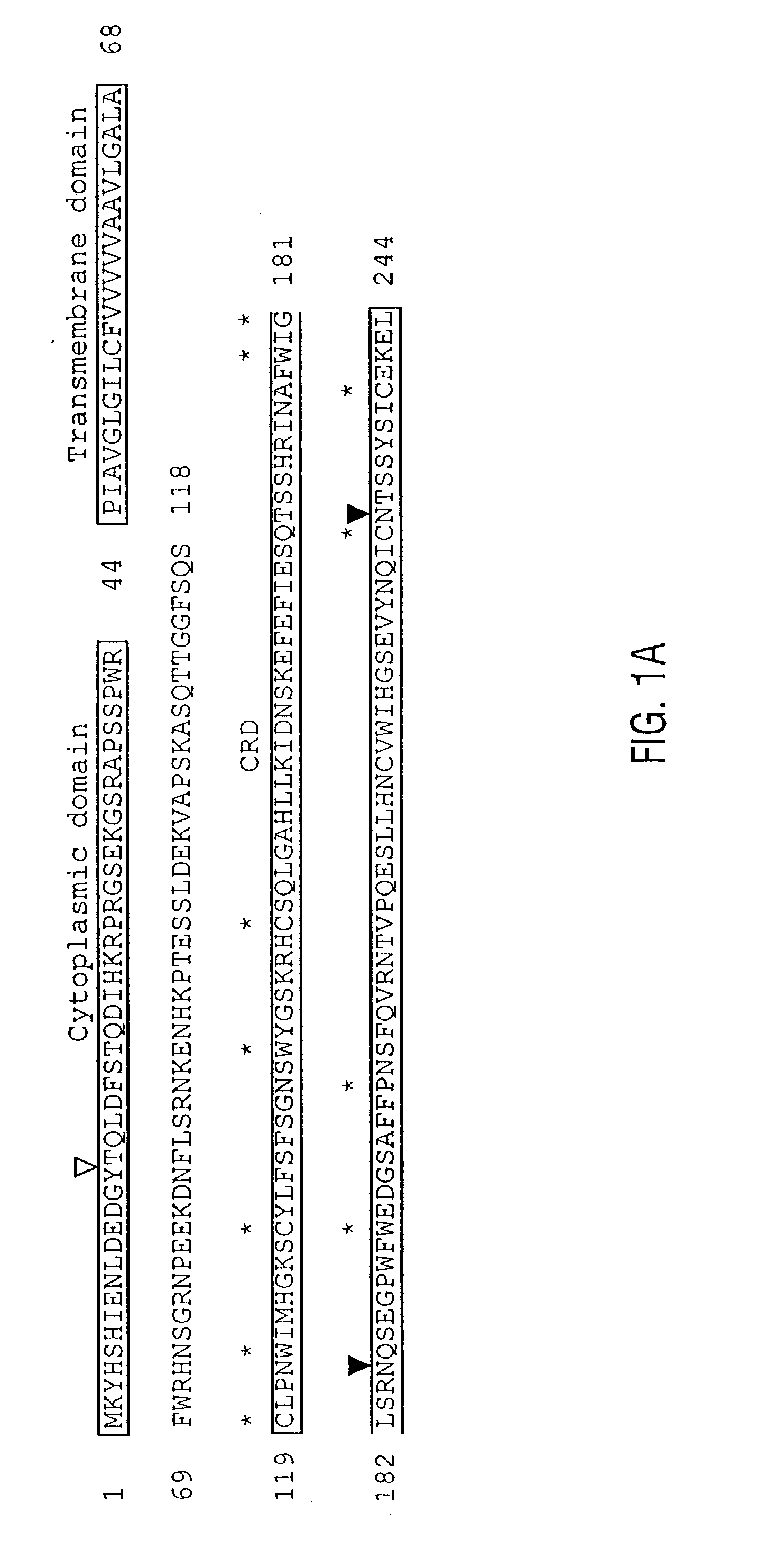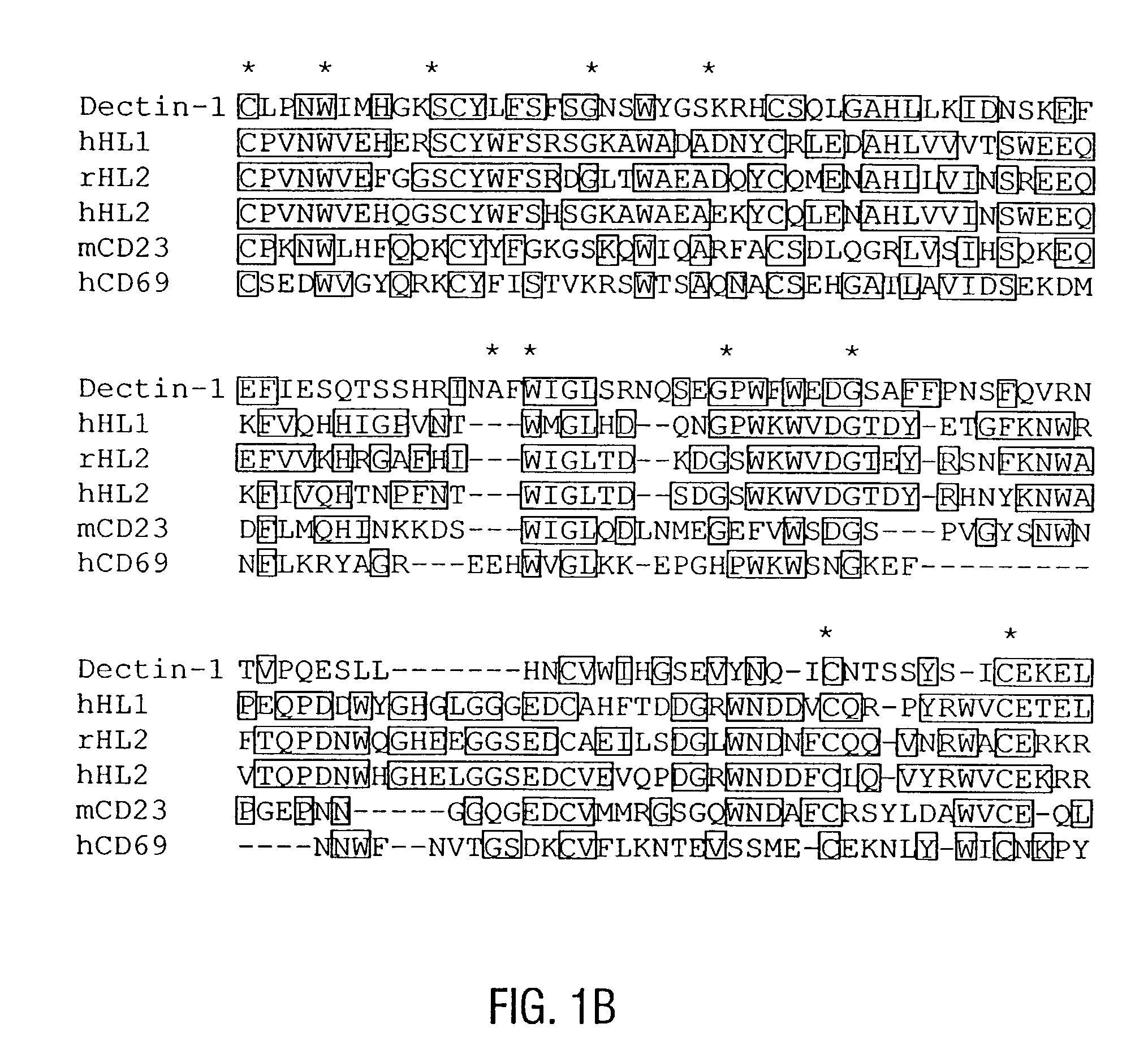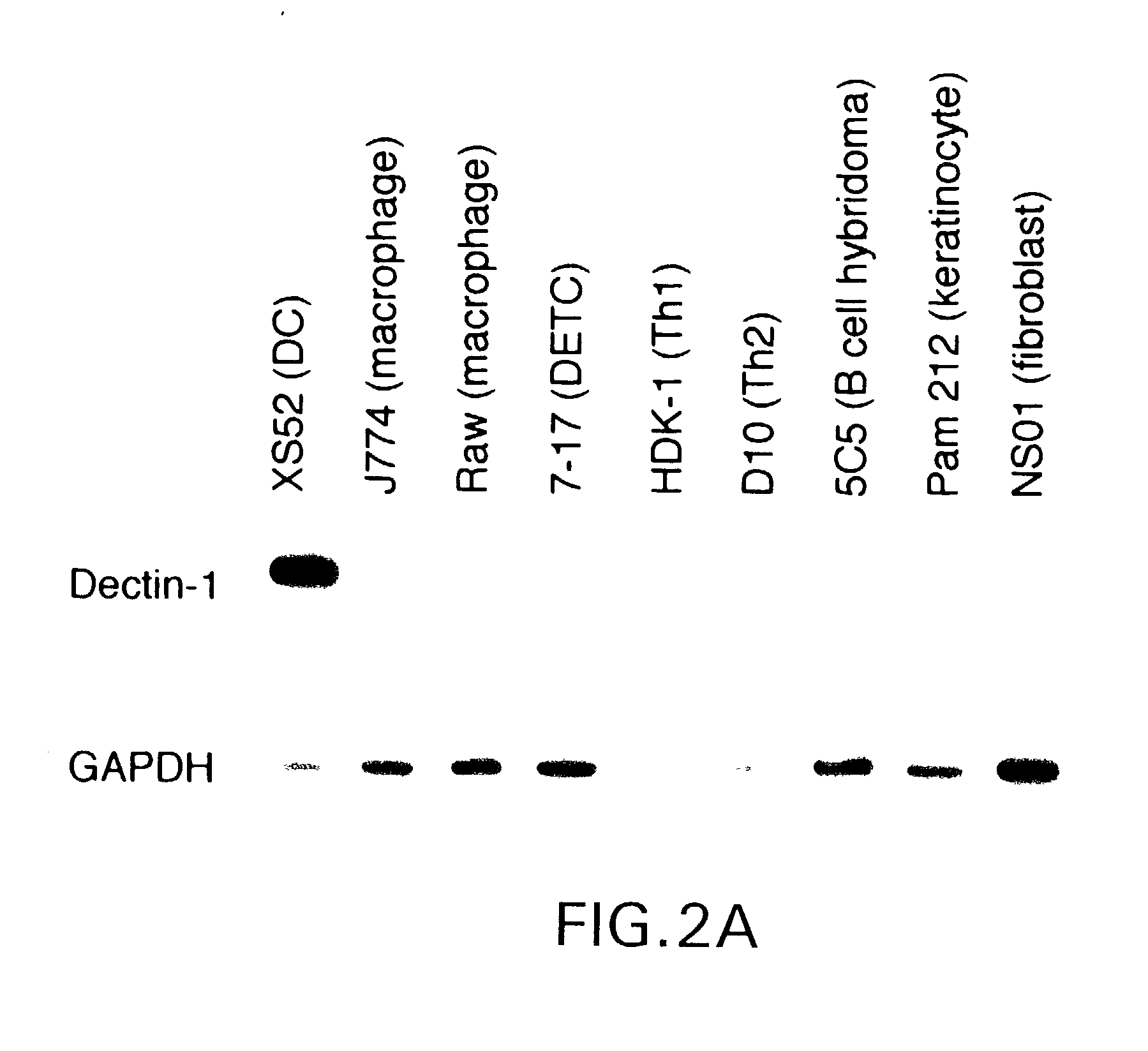Unique dendritic cell-associated C-type lectins, dectin-1 and dectin-2; compositions and uses thereof
a dendritic cell-associated and lectin-like technology, applied in the field of dendritic cells and their role in t cell activation, can solve the problem that carbohydrate moieties do not necessarily serve as “natural"
- Summary
- Abstract
- Description
- Claims
- Application Information
AI Technical Summary
Benefits of technology
Problems solved by technology
Method used
Image
Examples
example 1
Obtaining Dectin-1
[0519] A long-term DC line established from the epidermis of newborn BALB / c mice, termed XS52, was used. mRNAs isolated from the XS52 DC line were reverse-transcribed into double-strand cDNAs, ligated unidirectionally into the lambda ZAP II vector, and packaged into phage particles. Double-stranded DNAs were then converted to single-stranded forms by co-infection with ExAssist helper phages, and single-stranded DNAs (in the anti-sense orientation) were hybridized with biotinylated mRNAs isolated from the J774 macrophage line. A subtractive cDNA library was then constructed from the unhybridized cDNAs; 50- to 200-fold enrichment was achieved by this subtraction.
[0520] cDNA isolated from the XS52 DC line was hybridized with excess mRNA from the J774 macrophage line and a library was constructed from the cDNA that remained unhybridized. A total of 12,000 clones in the subtracted library were screened sequentially by colony hybridization, slot blotting, and northern ...
example 2
DC Expression of Dectin-1
[0522] Northern blotting and RT-PCR™ were carried out as described previously (Ariizumi et al., 1995; Takashima et al. 1995). The following primers were used to amplify the dectin-1 DNA: 5′primer; 5′-AGGCCCTATGAAGAACTACAGACA-3′ (SEQ ID NO:29) and 3′primer; 5′-AACCATGGCCCTTCACTCTG-3′ (SEQ ID NO:30). After 30 cycles of amplification, PCR™ products were hybridized with internal probes.
[0523] As mentioned above, dectin-1 mRNA was expressed at relatively high levels by XS52 DC, whereas it was detected at only negligible levels in J774 macrophages. To further assess expression specificity, the inventors examined a wide panel of cell lines, including two macrophage lines, a B cell hybridoma, and two αβ T cell lines. Once again, dectin-1 mRNA was expressed exclusively by the XS52 DC line (FIG. 2A). Because the XS52 line, but not other cell lines, had been expanded in the presence of GM-CSF and CSF-1 (Xu et al., 1995; Takashima et al., 1995), the inventors consider...
example 3
Production of Antibodies to Dectin-1
[0524] Rabbits were immunized with the synthetic polypeptide, GRNPEEKDNFLSRNKENHKP (SEQ ID NO:11), and collected serum was subjected to affinity purification using the Thiol Coupling Gel conjugated with the same polypeptide. Cells were extracted in 0.3% Triton X-100 in PBS and examined by immunoblotting with anti-peptide antibodies or rabbit IgG control as described previously (Mohamadzadeh et al., 1996). Splenic DC were surface labeled with 125I and then subjected to immunoprecipitation with anti-peptide antibodies or rabbit control antibodies as before (Kitajima et al., 1995).
[0525] Affinity-purified antibodies (BAD1-Pep) against a synthetic polypeptide GRNPEEKDNFLSRNKENHKP (corresponding to aa 75-94) (SEQ ID NO:11) immunolabeled a major band of 41 kD in an extract of XS52 DC, but not J774 macrophages (FIG. 3A). This major band was considerably larger than the molecular weight (28 kD) predicted from the amino acid sequence of dectin-1. This di...
PUM
| Property | Measurement | Unit |
|---|---|---|
| Volume | aaaaa | aaaaa |
| Volume | aaaaa | aaaaa |
| Volume | aaaaa | aaaaa |
Abstract
Description
Claims
Application Information
 Login to View More
Login to View More - R&D
- Intellectual Property
- Life Sciences
- Materials
- Tech Scout
- Unparalleled Data Quality
- Higher Quality Content
- 60% Fewer Hallucinations
Browse by: Latest US Patents, China's latest patents, Technical Efficacy Thesaurus, Application Domain, Technology Topic, Popular Technical Reports.
© 2025 PatSnap. All rights reserved.Legal|Privacy policy|Modern Slavery Act Transparency Statement|Sitemap|About US| Contact US: help@patsnap.com



